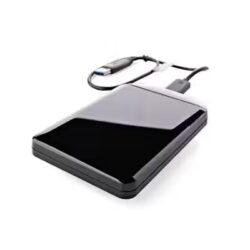The banking world has spent the last decade perfecting the digital experience. We can now deposit checks with our phones, transfer funds instantly across the globe, and apply for credit cards from the comfort of our couches. These digital tools have raised the bar for convenience, setting an expectation of seamless, instant service.
Yet, a critical disconnect remains: the moment a customer steps inside the physical bank branch.
Despite all the technological progress, the in person visit often feels like a jarring step backward. Customers who are accustomed to fingertip convenience online are suddenly confronted with manual check in processes, confusing multi purpose lines, and the frustrating uncertainty of a long wait. This point of friction—where digital expectation meets physical reality—is severely undermining customer loyalty and the very value of the branch.
The physical bank visit today must be viewed as an extension of the digital experience, not a separate, lesser alternative. To achieve this, banks must leverage their best digital tools to govern and orchestrate the physical flow of people. The answer lies not in eliminating the branch, but in transforming the waiting area into a highly efficient, digitally managed service hub using a flexible, integrated platform: a web based queue management system.
The Digital Divide: Why Traditional Waiting Fails
The root of the problem is a failure to properly integrate the bank’s digital infrastructure with its physical operations. The resulting friction creates several critical problems.
1. The Universal Line Dilemma: Most bank lobbies rely on a single, undifferentiated line or a simple “take a number” system. This forces a customer who only needs a quick, three minute ATM instruction to wait behind a customer embarking on a forty minute, complex loan consultation. The line becomes a bottleneck, punishing simple transactions with long waits and delaying high value advice. This is an inefficient use of both the customer’s time and the bank’s specialized staff.
2. Staff Confusion and Lost Time: Teller lines and customer service representatives (CSRs) often waste valuable time attempting to triage customers manually. They have to stop serving one person to ask the next person in line why they are there, determine which expert is needed, and then point them to the correct desk. This constant distraction slows down transactions and leads to mistakes. Staff members are pulled away from their core, revenue generating duties—such as advisory sales—to manage foot traffic, a poor allocation of skilled labor.
3. The Preparation Gap: Unlike a scheduled virtual meeting where the banker can pull up a customer’s file in advance, a walk in client in a traditional queue starts the interaction from scratch. The banker must spend the first five to ten minutes of a consultation gathering basic information and documents. This lack of preparation extends the service time, reduces the quality of the advice, and leaves the customer feeling rushed and disorganized.
Governing the Visit: The Digital Flow Mandate
The modern solution is to use digital tools to manage the physical space, creating an experience that is transparent, personalized, and efficient from the moment the customer arrives. This shift requires a smart web based queue management system that acts as the traffic controller for the branch.
1. Smart Digital Check In and Triage
The first point of physical contact should be a digital interface that segments the customer’s visit, replacing the chaotic physical line with an organized, virtual one.
- Self Service Kiosks and Mobile Check In: Customers can check in quickly using a simple touch screen kiosk in the lobby or, even better, by scanning a QR code with their mobile phone. The system prompts them to select their service need: “Simple Teller Transaction,” “Financial Consultation,” “Safe Deposit Box Access,” or “New Account Opening.”
- Immediate Queue Segmentation: Based on this input, the web based queue management system instantly places the customer into the appropriate virtual queue. The simple teller line moves fast, and the complex advisory queue routes to a specialist. This separation ensures that every customer’s wait time is proportional to the complexity of their need.
A versatile platform like Qwaiton ensures this process is fast and intuitive, making the digital check in feel like a natural extension of the bank’s app experience.
2. Skill Based Routing and Proactive Preparation
The intelligence of the system lies in its ability to match the customer’s precise needs to the best available resource, maximizing the effectiveness of the bank’s highly skilled staff.
- Expert Matching: The system is programmed to know which staff members are certified for mortgages versus business loans versus wealth management. When a customer checks in for a “Small Business Loan” consultation, the system automatically routes them to the next available and qualified specialist. This avoids misallocation and ensures the customer receives expert advice immediately.
- Data Handoff: Once a customer is assigned, the web based queue management system alerts the specialist’s workstation and automatically displays the customer’s service request, notes, and any necessary prechecked documents. The specialist is prepared and informed before the customer even sits down, allowing the consultation to begin immediately on substance.
This proactive preparation drastically cuts down on service time and enhances the professionalism and quality of the advisory experience.
The Efficiency Engine: Data Driven Branch Operations
Implementing a digital flow system is not just a customer courtesy; it is a fundamental shift in operational efficiency that translates directly into better service and higher revenue.
1. Wait Time Transparency and Freedom: The system sends a notification to the customer’s phone with their place in line and an estimated wait time. This transparency is key to managing customer satisfaction. Freed from the physical line, the customer can browse lobby displays, review their paperwork, or simply wait more comfortably. This eliminates the anxiety of the unknown wait and makes the time feel less burdensome.
2. Metric Driven Staffing: The web based queue management system provides managers with crucial data on service velocity. Which queue moves slowest? What is the average service time for a complex transaction? This data allows managers to accurately forecast peak hour demands and dynamically deploy staff, ensuring the bank always has the right number of experts available when high value customers are most likely to visit. The system prevents overstaffing during slow periods and understaffing during peak demand.
Using a solution like Qwaiton, banks can move past intuition and guesswork, operating their physical branches with the same data driven precision used to manage their online infrastructure. This leads to reduced labor costs associated with inefficiency and a higher percentage of productive, revenue generating time for specialist advisors.
Securing Loyalty in the New Banking Era
The physical bank branch will always have a vital role in financial life, especially for moments that require trust, advice, and complexity. However, its survival depends on its ability to meet the digital standard of convenience and efficiency.
By integrating a web based queue management system into the lobby experience, banks finally close the digital divide. They transform the old, frustrating line into a seamless, orchestrated journey. This demonstrates a deep respect for the customer’s time and ensures that the final step in a customer’s interaction reinforces, rather than sabotages, their long term loyalty. The future of the branch is not physical or digital—it is an intelligent, friction free integration of both.


